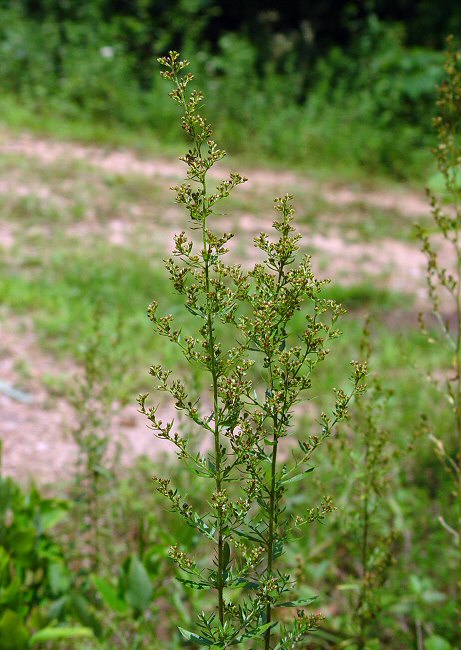Lechea mucronata Raf.
Hairy Pinweed

Native
CC = 5
CW = 5
MOC = 65
© DETenaglia
Lechea mucronata Raf.Hairy Pinweed | |
 |
Native CC = 5 CW = 5 MOC = 65 |
© DETenaglia |
|
Family - Cistaceae Habit - Taprooted perennial forb. Stems - Erect, to 80 cm, single to multiple from the base, moderately to densely pubescent with conspicuous spreading hairs (these sometimes worn away, but leaving persistent, slightly pustular bases).
Leaves - Alternate or opposite, simple, entire. Blades with the upper surface glabrous or sparsely hairy, the lower surface moderately to densely hairy, especially along the margins and midvein, those of the overwintering offshoots 4-15 mm long, the largest 8-15 mm long, ovate-elliptic to broadly ovate-elliptic, bluntly to sharply pointed at the tip; those of the flowering stems 5-30 mm long, lanceolate to elliptic or oblanceolate, sharply pointed to less commonly rounded at the tip.
Inflorescence - Dense terminal panicles with leaflike bracts, sometimes appearing as axillary racemes with clusters of flowers. Inflorescence axes villous to antrorse pubescent. Pedicels to 1 mm long, antrorse pubescent.
Flowers - All morphologically similar, but frequently not appearing to open. Sepals 5, green, erect, with whitish-scarious margins, cupped, with some hairs externally, glabrous internally, acute to rounded at the apex. Outer 2 sepals 1.9-2.2 mm long, slightly shorter than to slightly longer than the inner ones. Inner 3 sepals 1.5-2.2 mm long, broadly ovate to nearly circular, deeply cupped, strongly angled along the midrib, glabrous or hairy along the midrib. Petals 3, 0.7-1.2 mm long, shorter than the sepals, withering but persistent at fruiting, oblong-oblanceolate, rounded at the tip, dark red. Stamens 5 to numerous. Filaments purple, glabrous, 2 mm long, filiform. Anthers tan, quickly drying to blackish with tan ridges, 0.2 mm long. Style absent, the stigmas 3, plumose with dense, feathery hairs, dark red. Ovules 6 (2 per carpel). Ovary green, glabrous, globose, 1 mm in diameter in flower, superior.
Fruits - Capsules, 3-valved, longitudinally dehiscent, 1.4-2.1 mm long, usually slightly shorter than the persistent sepals, more or less globose, mostly 3-seeded. Seeds 0.9-1.2 mm long, brown to yellowish brown. Flowering - July - November. Habitat - Glades, savannas, upland prairies, sand prairies, dry upland forests, fields, mostly in sandy or other acidic soils. Origin - Native to the U.S. Lookalikes - Rumex acetosella, Rumex hastatulus. Other info. - This weedy-looking species can be found mainly in the southern half of Missouri. The plant is easy to overlook because of its small flowers and small leaves. The plant is recognized by its conspicuously hairy stems and dense inflorescences of characteristic globose fruits. Like all members of this family, the calyx is composed of two distinct sets of sepals: two outer and three inner, with the outer sepals usually being narrower. Photographs taken near Spout Spring in Carter County, MO., 7-5-04 (DETenaglia); also at the MPF Sand Praire near the Charleston Baptist Association, Scott County, MO, 7-12-2021 (SRTurner). |